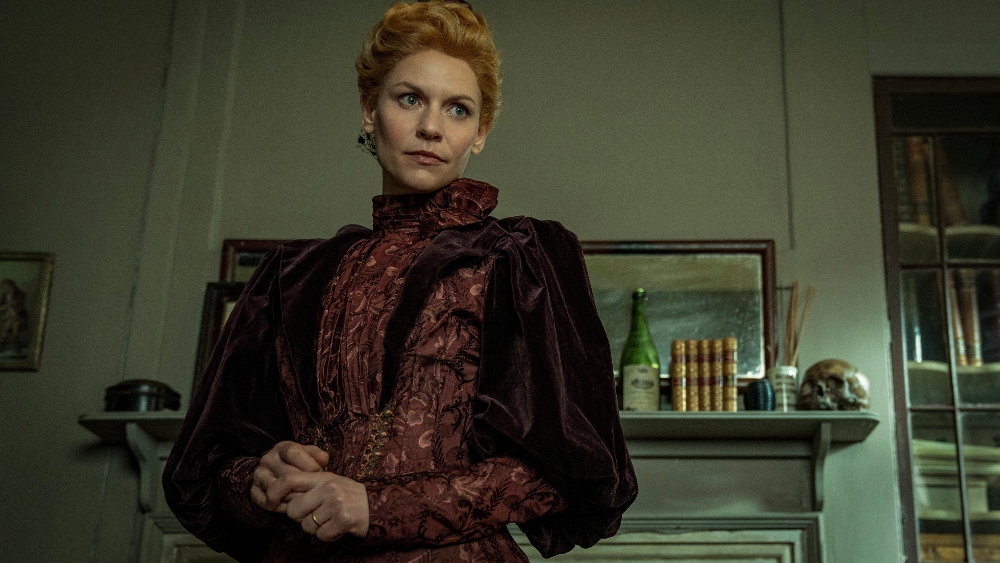
The Essex Serpent, streaming on Apple TV+ is a mixture of forbidden love with a hearty dose of folklore. Based on the novel by Sarah Perry, the six episodes center on London widow Cora Seaborne (Claire Danes), a passionate paleontologist, who moves to the coastal town of Essex to investigate reports of a mythical water serpent spreading terror among the villagers. While consulting with the dashing married town pastor Will Ransome (Tom Hiddleston), she inescapably falls for him.
Set near the end of the Victorian era, the story flips between high society London and the bucolic coastal getaway of Essex. As for the clothes the characters wore in London during that time, Scottish-born costume designer Jane Petrie was the idyllic choice coming off of her Emmy and CDG Award wins for her period designs for Season 2 of The Crown. Her other non-Victorian credits include French Exit, The Party, Moon, Black Mirror, and The King. Petrie clearly understood the parameters of period clothing but was emboldened to go even bigger. With the villagers of Essex, she could also apply a bit more artistic license, adding her love of western attire to accent the earthy costumes with cowboy hats and neck scarves.
Below the Line spoke with Jane Petrie via Zoom from Prague where she is working on season 2 of Apple TV’s Foundation, her second sci-fi endeavor since Moon. Petrie discusses her inspirations for The Essex Serpent, which aligns much more to her familiar wheelhouse, but yet somehow managed to put her own Japanese-infused spin on Victorian costuming. She also reveals her love of western garb, adding how a little bit of country made its way into the village wear. In fact, whenever possible, she seeps her vast collection of hats and cowboy couture into her designs as she’s never had the opportunity to work on a full-fledged Western in the states. Speaking of the states, Jane also recalls how she fanned out in Hollywood on the night of the Emmys over a popular space captain.
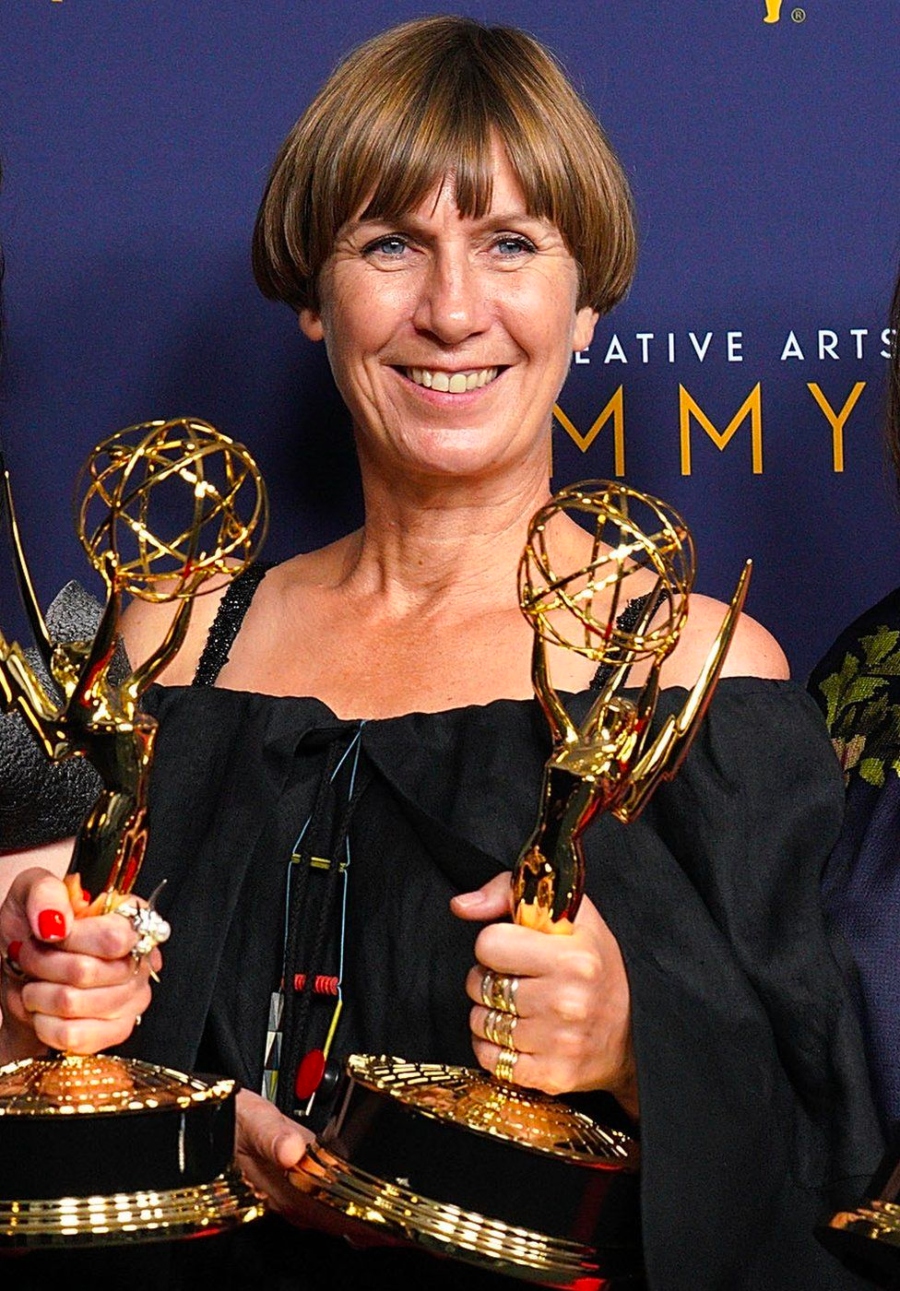
Below the Line: How would you say that The Essex Serpent aligns with your wheelhouse?
Jane Petrie: The Essex Serpent is much more where I’ve trained and what I knew. I’ve never done Victorian the way that we did it but knew what the springboard would be. I have done Victorian before and I’d done this period before and I’d done Suffragette from 1912. Even though it takes place in the same year it’s going to be a different world with a different tone and a different kind of vibe in the script. The Essex Serpent script had this nice kind of Gothic-y London start and then we go out into this really strange backwater in Essex, so it didn’t feel familiar.
BTL: How would you describe that springboard?
Petrie: What I started with was my knowledge and my history. I knew the people and the period and roughly what was happening in London at the time. It gave me a lot of confidence to plunge straight into something a little bit bolder. I didn’t have to do much feeling around. Typically I start to get to know a period and try a few fittings with a couple of background actors to have a bit of a play and get a feel for things. I was confident in terms of what I wanted to bend in terms of the rules and what I wanted to push harder and things that I might exaggerate or emphasize.
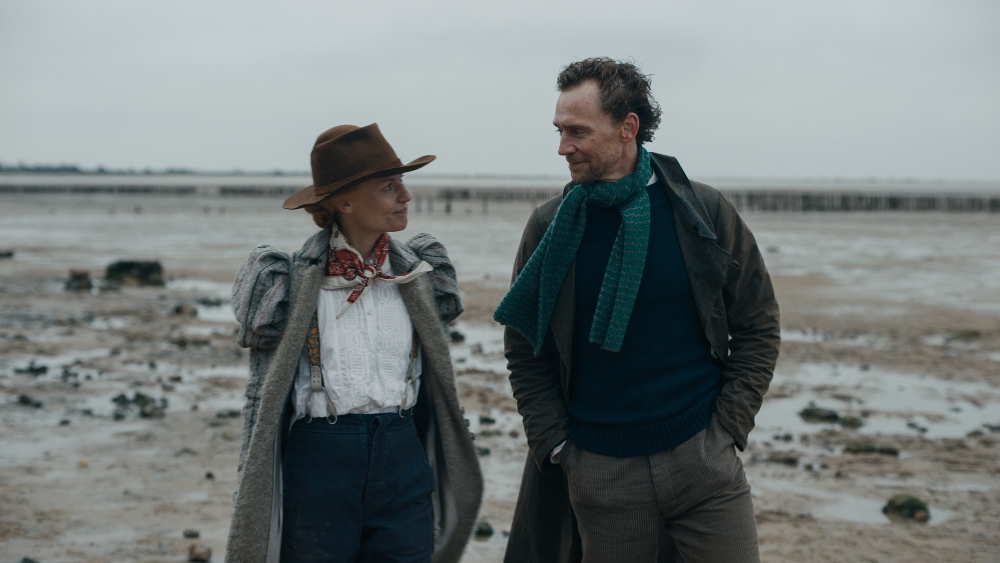
BTL: How did bending the rules apply to the villagers in Essex?
Petrie: The look of the villagers in Essex in geographically that spot looked like at that time. I blended Dutch fishing communities and fishing communities further up the coast. It’s all accurate and authentic but it’s not specific to that region. What we wanted to do was create our own regional dress for the village. It’s a much earlier feel and it’s a much more kind of European regional folk dress with the Dutch who they probably had contact with.
BTL: How did you design the London looks?
Petrie: The costumes that Claire wore as Cora in London, I was already starting something quite bold with the shapes of the sleeve heads because I rummaged around that date in the past. I thought, ‘let’s really go for it.’ They’re quite big and we looked at origami, this Japanese influence that her husband Michael had in his house, and did a lot of folding. There’s a whole Japanese thread to the design of the London home that (production designer) Alice Normington was using, and I jumped right onto that. There’s a reference to a Japanese vase that is prepared with gold so I sort of ran with little threads like that. The Japanese thread is a bit of a twist into Victorian England.
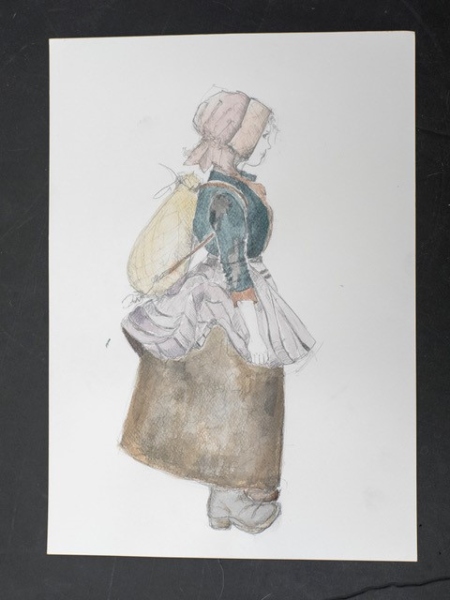
BTL: What London sensibilities did Claire bring with her when she travels to Essex?
Petrie: Costume designers are all character-driven so I built Cora a wardrobe so she had her London day wear and a sort of traveling wardrobe. In that period we would’ve had country clothes and city clothes so I built that for her. So she had her country outfits and then she had her evening gowns. By taking the London evening gowns to Essex, it would mean that she was inappropriately dressed. We tried to bring the London world with her so she’s more fashionable than the villagers. On the coast of England, they call the people who moved out of London, “DFLs” (down from London), so I sort of wanted it to be a bit of a DFL so the villagers would be a definite stranger and she was very different. The clothes had to reflect the Essex countryside and the people that she met and started to have an impact on her life and how her emotions start to soften and loosen up, but we used the same garment to do that.
BTL: How were you inspired by the coastal countryside of Essex?
Petrie: It’s amazing out there actually. I wasn’t familiar with it at all. The Essex that I know is much more of a London overspill and we were way out on the coast. This is further out and it’s much more coastal. It’s really different and it’s marshy and murky with a lot of wildlife. You come out of London where you can’t see any stars and you get to Essex and there’s this massive sky. It made us feel like we wanted Cora to feel. You immediately want to get your wellies on and take off your London clothes.
BTL: Let’s talk about the hats and the bonnets. Where did they come from?
Petrie: The cotton ones that the villagers wore, if they were patterned or striped then we made them. We made them from the patterns from the original bonnets that I own because I’ve got quite a few and collected over the years. The little city hats that Cora wears were mine. I’ve just been collecting them because they’re not in the costume houses anymore. They’re all a bit damaged and tired and I thought it was time to start gathering them through all my working life. All the hats are mine, even the cowboy hat. Frank‘s [Dillane as Dr. Luke Garrett) bowler was one of mine as well.
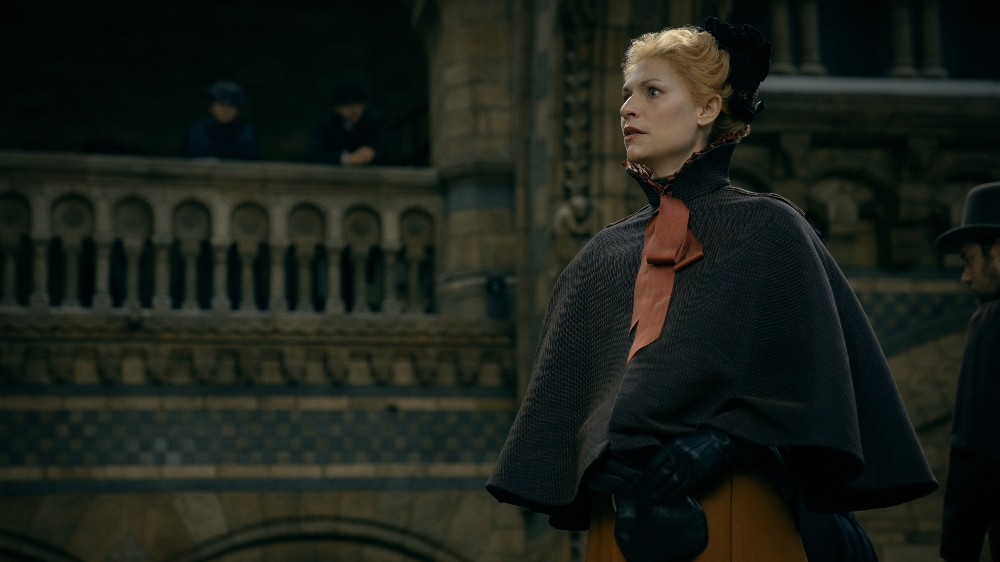
BTL: What inspired the pastor’s clothes?
Petrie: His vicar’s outfit was just research. His daywear, we really didn’t apply the dog collar that they wear all the time and Will Ransome was really quite relaxed about that because he’s got that Bohemian household so we could shy away from it sometimes. His fisherman’s jumper (sweater) was in our imagination, one of the villagers had knitted that for him. We used the same fabric for his workaday suit and his oil skin overcoat used the same cloth that we made the villager men’s clothes in because we wanted him to be part of the community. He was embedded there and a man of the people so he would’ve used the same cloth with a different cut and shape.
BTL: The character of Cora Seaborne would make a wonderful model for Ralph Lauren.
Petrie: I am massively influenced by Westerns and the 1890s is a good Western period so that does tend to rub off on me and any opportunity I’ll have because I haven’t designed one yet in my career. I want to badly but we don’t make any Westerns here. Maybe somebody will make another spaghetti Western and I can get a job in Arizona.
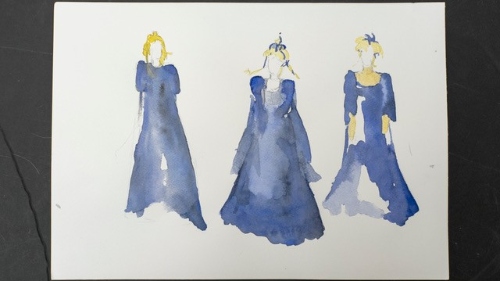
BTL: Before I let you go, take me through the evening when you won your Emmy Award.
Petrie: It was amazing and only what Hollywood does. In the same season, we had won the Costume Designers Guild Award for The Crown as well but that was me. The Emmys are fantastic because they recognize your department and your team. It was loads of fun. We were all sort of sitting there and then realized it was us so we are all in a muddle and go up on the stage and then one of our team Basha had her handbag with her. I was like, ‘what’ve you got your handbag for?!’ We had to go upstairs and get our photographs taken and we were right behind the team of Star Trek and so we met William Shatner and they were going, ‘Oh you guys, we love The Crown,’ and we’re like, ‘Are you kidding? We love Star Trek.’ It was brilliant.
BTL: What do you hope your designs for The Essex Serpent achieve with audiences?
Petrie: I hope that the costumes are telling the story and supporting the narrative, helping to take people on the emotional journey that the characters go on. It’s awful nice when people say they like the costumes but you don’t want to be heavy-handed. You want the costumes to support it and not steal the show because that’s not what my job is. I hope the clothes belong on the characters that they’re investing in.
The Essex Serpent is now streaming on Apple TV+.





